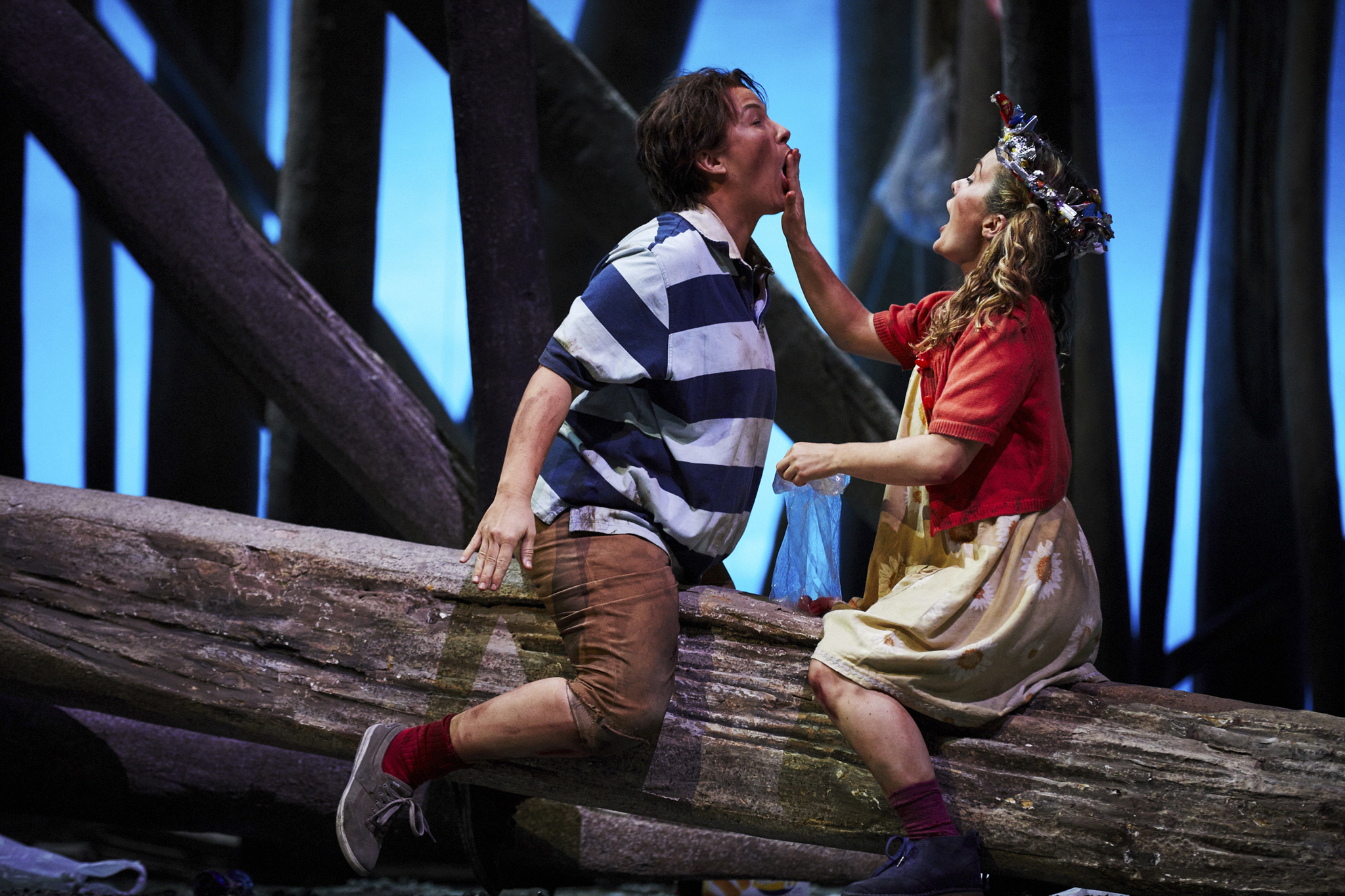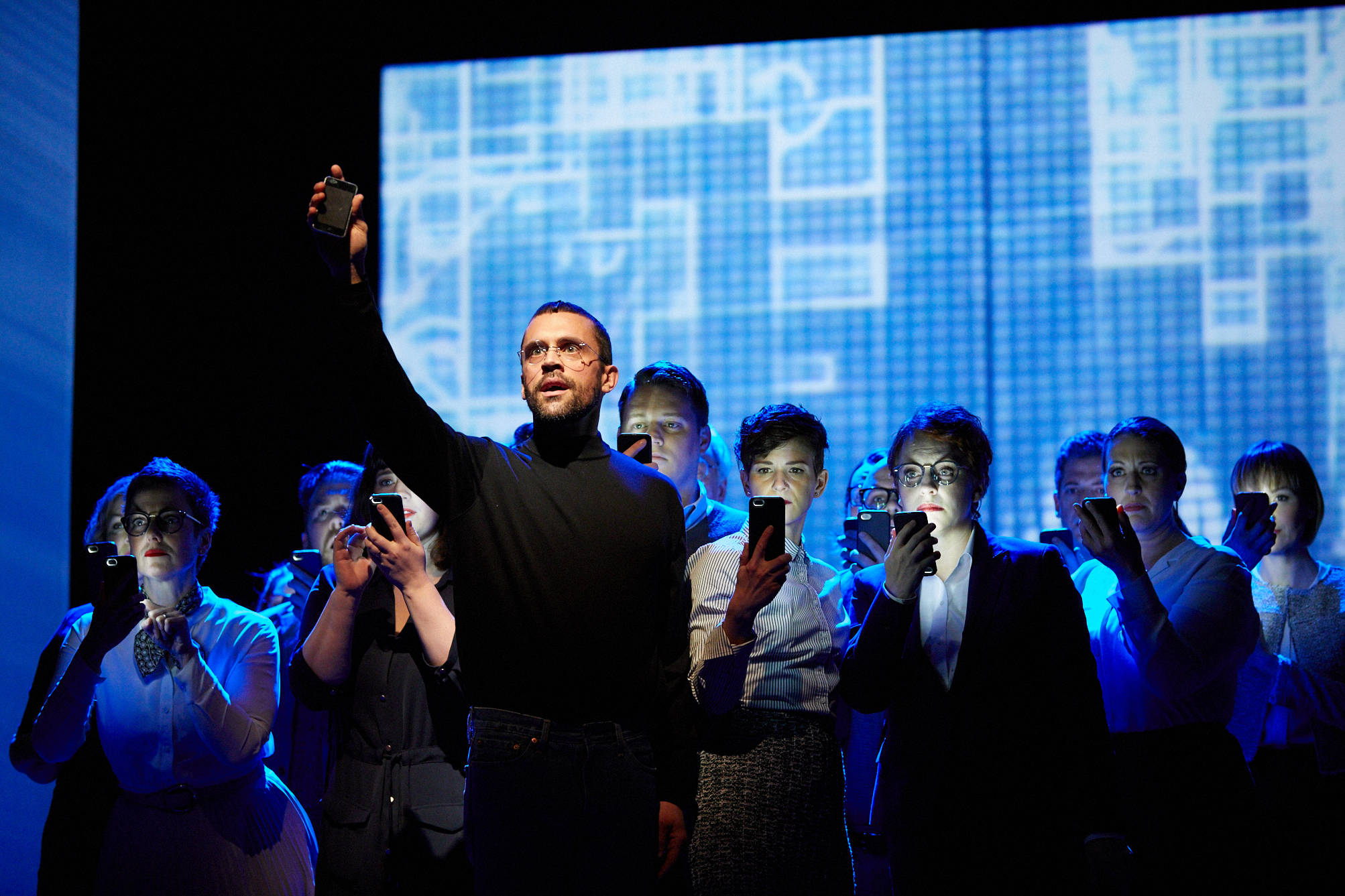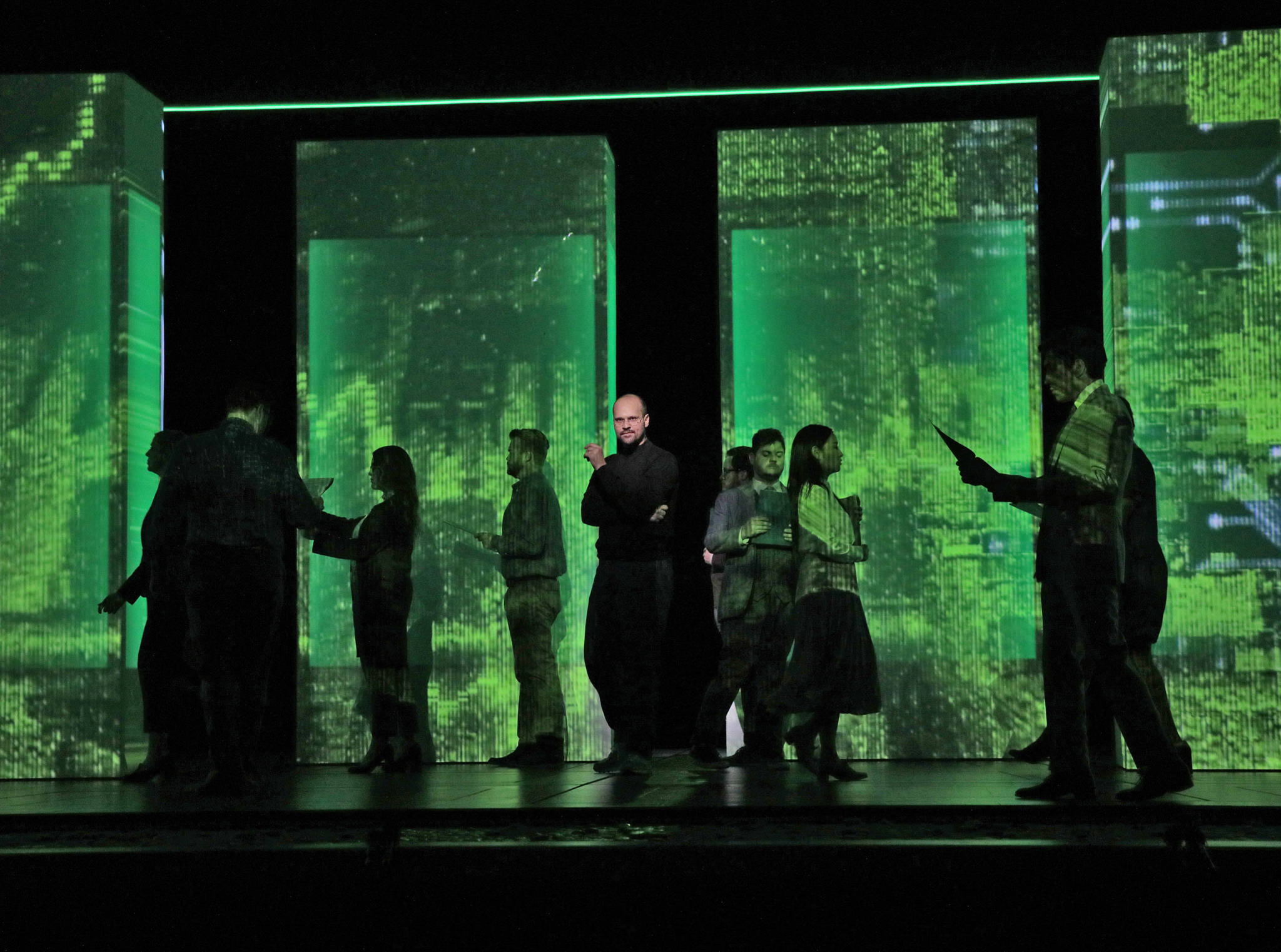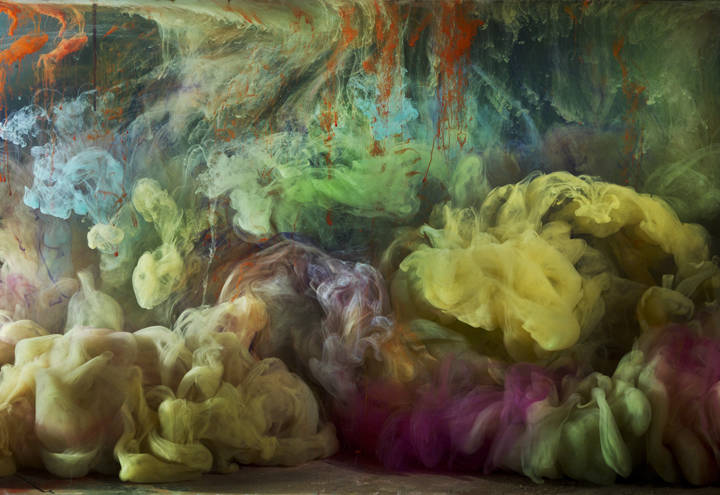Among much else on his resume, composer Engelbert Humperdinck was for a time a musical assistant to Richard Wagner, and in his Hansel and Gretel adapted his mentor’s opulent orchestral style to melodies of folk-song simplicity and catchiness—a brilliant synthesis that has made the opera a steady favorite since its 1893 premiere. The story is essentially the Grimm fairy tale as we all know it, with two audience-friendly changes: The cruelty is soft-pedaled—the matriarch a harried mother rather than a malevolent stepmother—and replaced with a generous helping of piety.
It may have been in part an attempt to secularize the piece a tad that inspired stage director Laurent Pelly’s fanciful and startling visual reimagination in 2008 for the Glyndebourne summer opera festival in Britain, a production brought to Seattle Opera for a run that opened Saturday. The opulence remains in Barbara de Limburg’s expansive sets, but the dramatic point is the contrast of the family’s poverty with the consumerist rapacity suggested by the Witch’s lair—not the usual gumdrop-bedecked gingerbread house but a towering ziggurat of brightly packaged junk food, like a Walmart endcap designed by Albert Speer. The woods resemble those at the end of The Lorax—a bleak landscape of denuded truffula trees after the Once-ler got through with them—while Hansel and Gretel’s forest hut is cunningly recast as a giant tattered corrugated-cardboard box. Since the family in the fairy tale is indeed poor, all this isn’t too much of a stretch, but there’s no use pretending it’s not also a cliché; let a thousand European directors loose on standard-repertory operas, and the unearthed subtext, 999 times, will be a critique of capitalism.
The production’s one serious failure is the treatment of the end of Act 2, as the children, lost in the woods, fall asleep after a brief aria by the Sandman and a prayer duet invoking angels to watch over them. Humperdinck’s intoxicating music is never more so than here, and the invitation to a director is to match it with equally gorgeous dream visions. (Not necessarily white wings and haloes; Claudia Zahn’s miraculous 1998 production at UW envisioned a celestial playground with kids in white pajamas and a starry-night backdrop.) This invitation was declined; what we get is a dozen or so high-def screens lowered from above showing video images of food (donuts, hamburgers, and such) and close-ups of little mouths devouring them. (From what I’ve read, they staged this scene differently in the original Glyndebourne production, so I’m not sure whose idea this is.)
Reinterpretation is all well and good, but the score is still the score, and these visuals, both ugly and unimaginative, evoking all the transcendent wonder of an IHOP commercial, fall disappointingly short of it, squandering so much potential for theatrical magic. (Or maybe, when you hear this music, you do indeed see in your mind’s eye chewed French fries.) Even beyond this, there are purely dramatic reasons this scene doesn’t work. At the beginning of the next act, the children actually describe what they were dreaming of, and there’s no way to explain the discrepancy. Plus, the bounty of food spoils the impact of the reveal of the Witch’s hut—not to mention that as an unashamed celebration of an unhealthy diet, it comes off in retrospect as hypocritical.
Still, the prayer was sung very prettily on Saturday by Sasha Cooke as Hansel and Ashley Emerson as Gretel. Bouncy and likable throughout, they nevertheless remind us of that inexplicable irony: The one thing all adult actors have in common is that they were once children, and the one thing no adult actor can do convincingly is play a child. Marcy Stonikas and Mark Walters make equally vivid parents, and most memorable is John Easterlin’s Witch, a role sometimes sung by a mezzo-soprano and sometimes by a tenor. Here he’s poured into a hot-pink tailored suit—Hairspray’s Edna Turnblad as a Mary Kay exec. The children’s choir—freed by the Witch’s death—provides a warmly enchanting finale, and best of all the Seattle Symphony, with decades of applicable Wagner experience, makes Humperdinck’s music all it can be under conductor Sebastian Lang-Lessing. Hansel and Gretel, McCaw Hall, Seattle Center, 389-7676, seattleopera.org. $25 and up. Ends Oct. 30.
gborchert@seattleweekly.com








